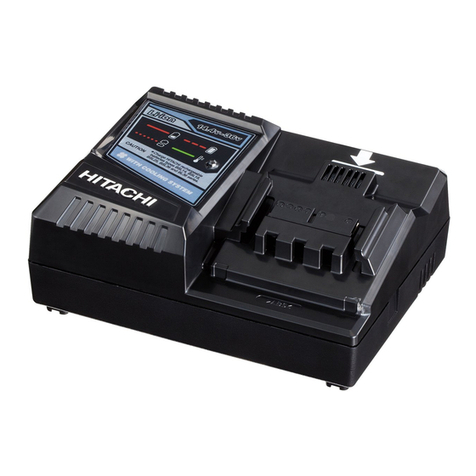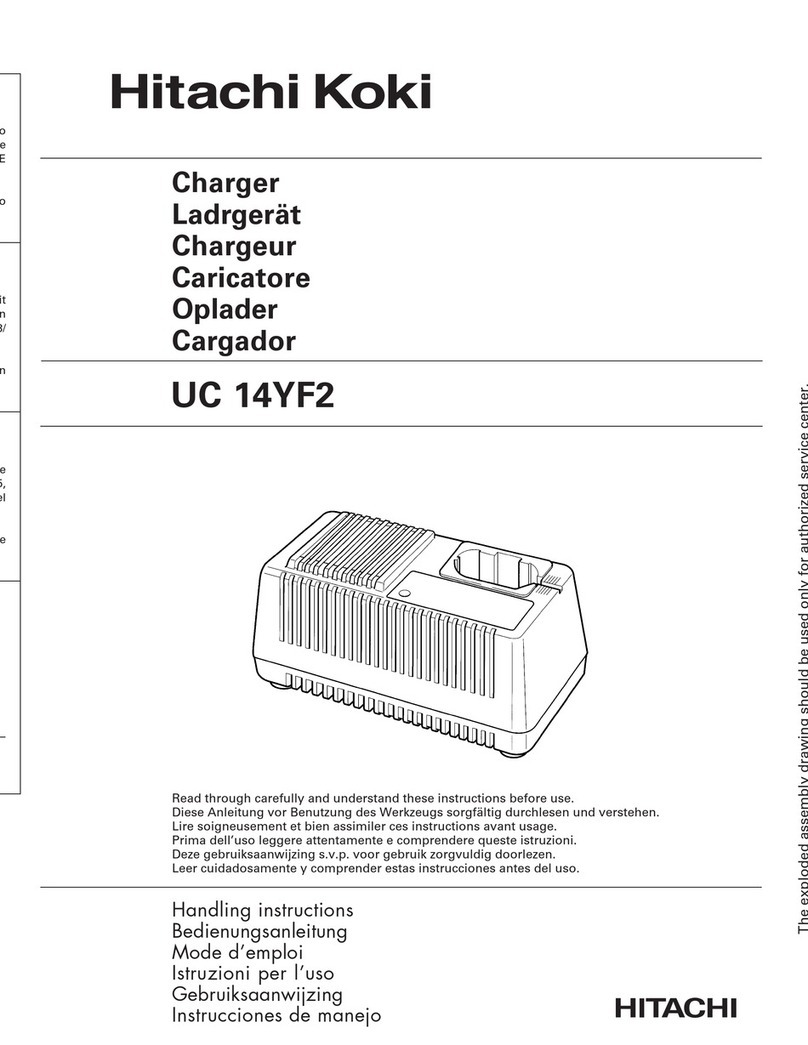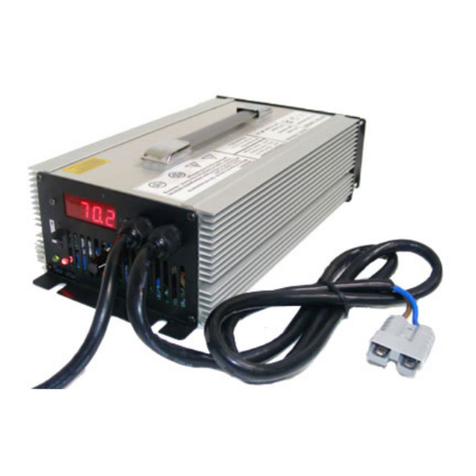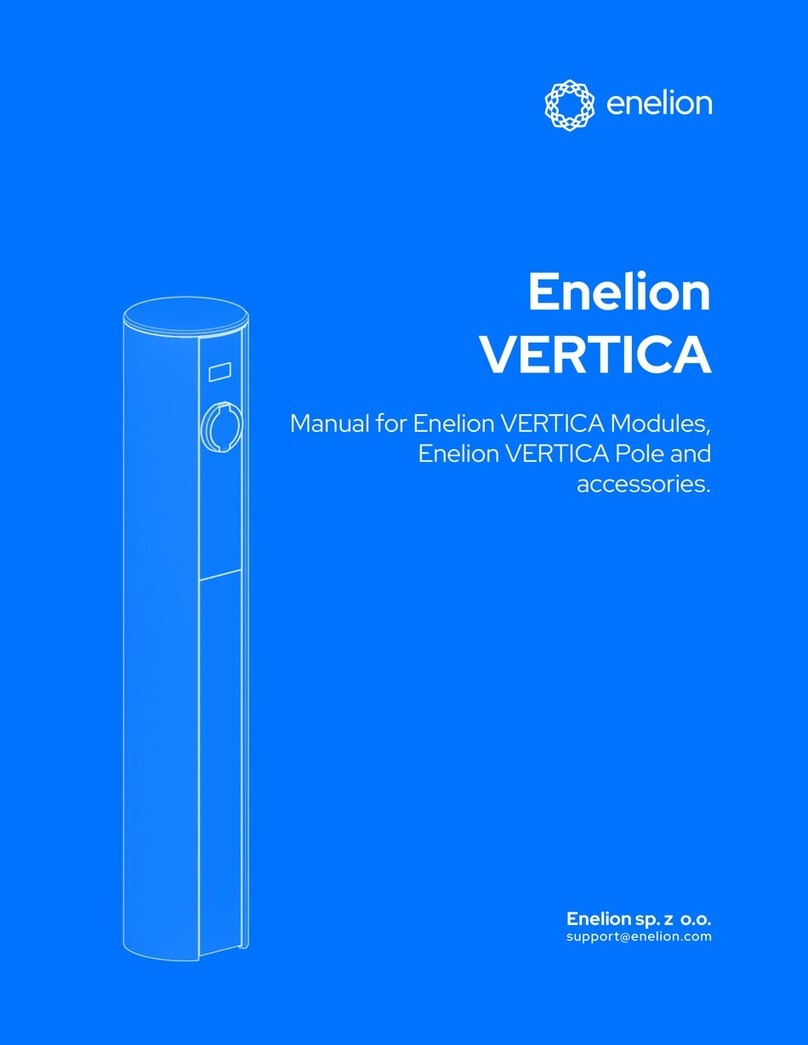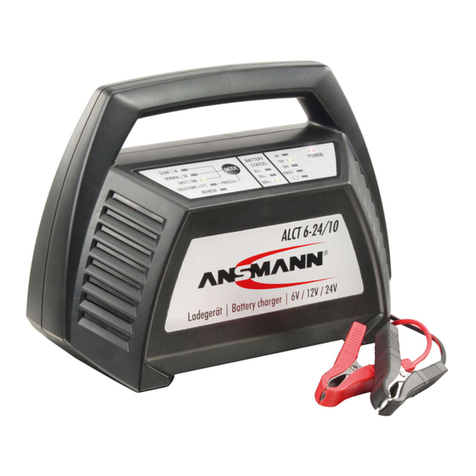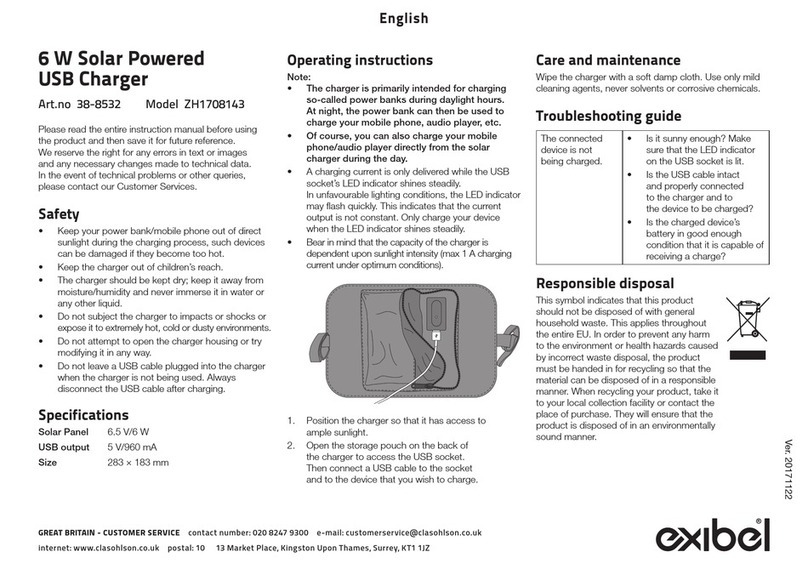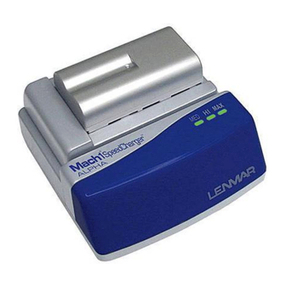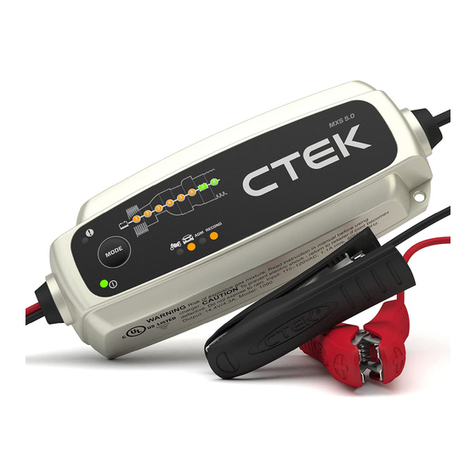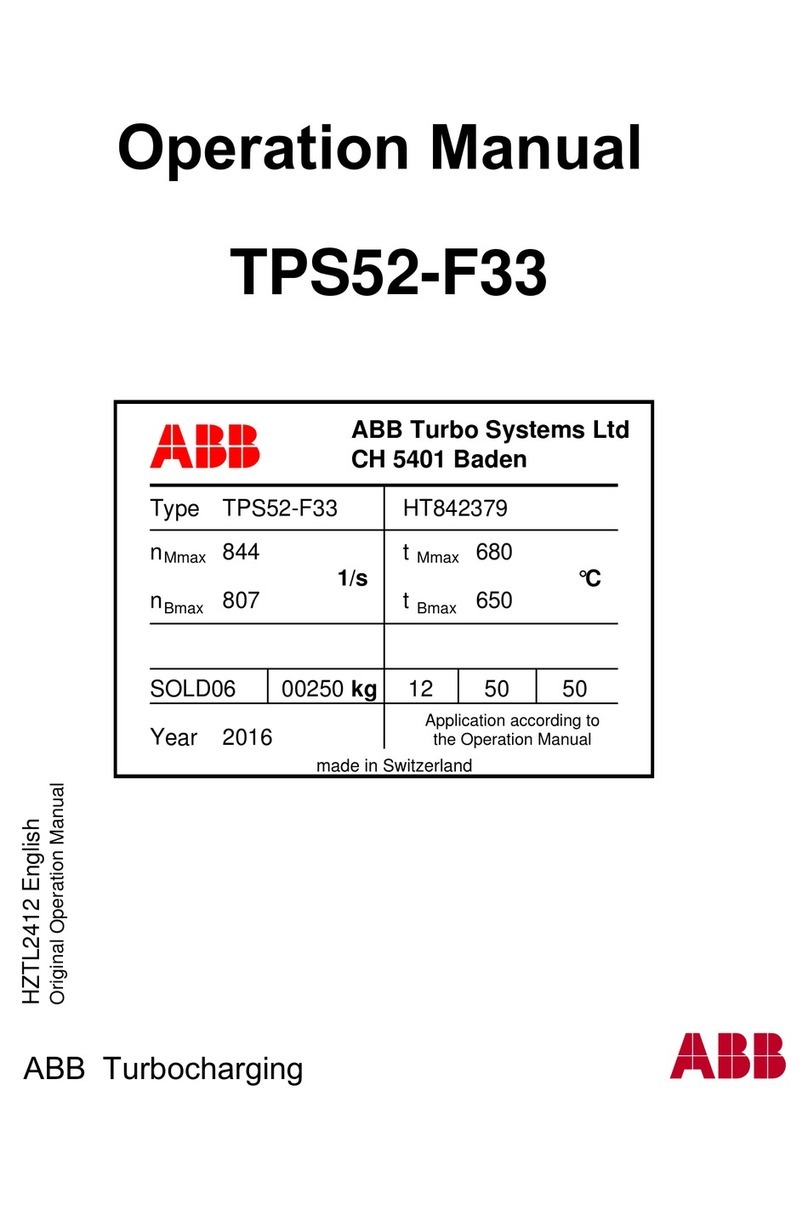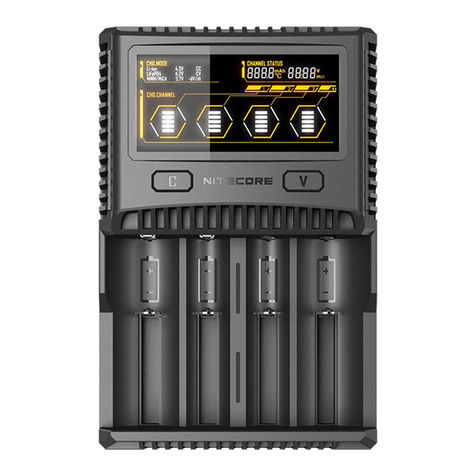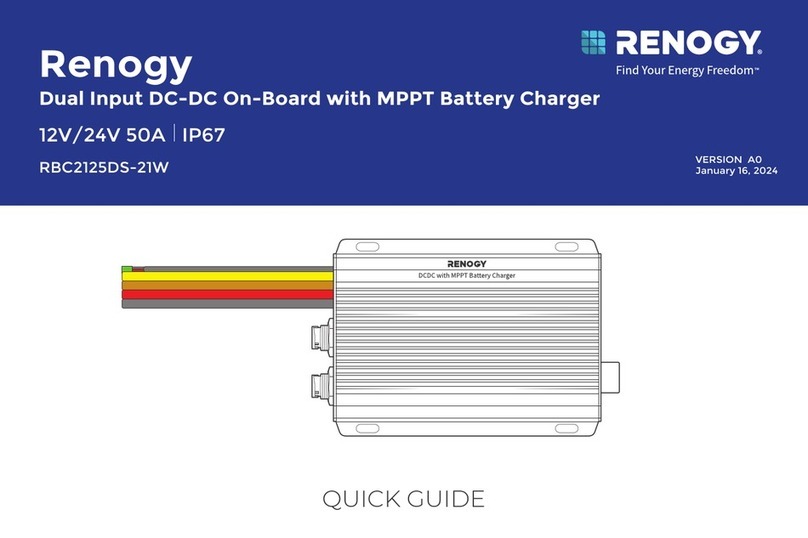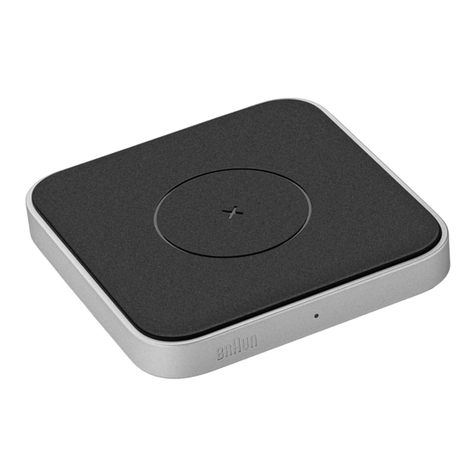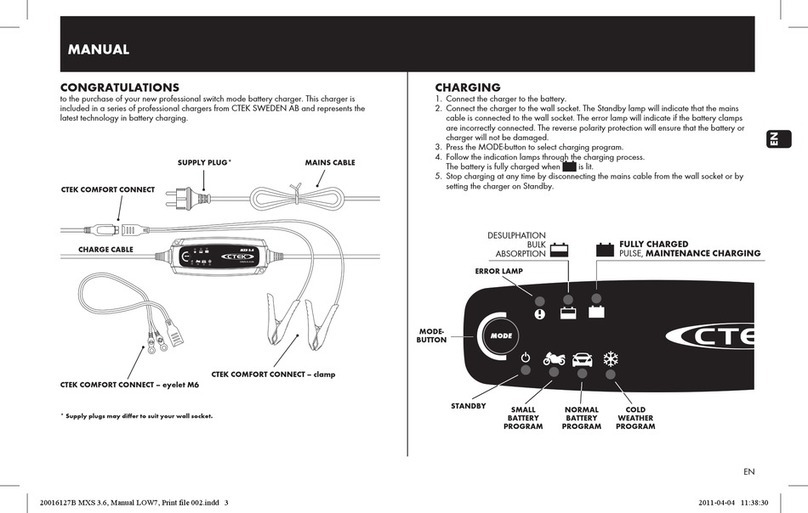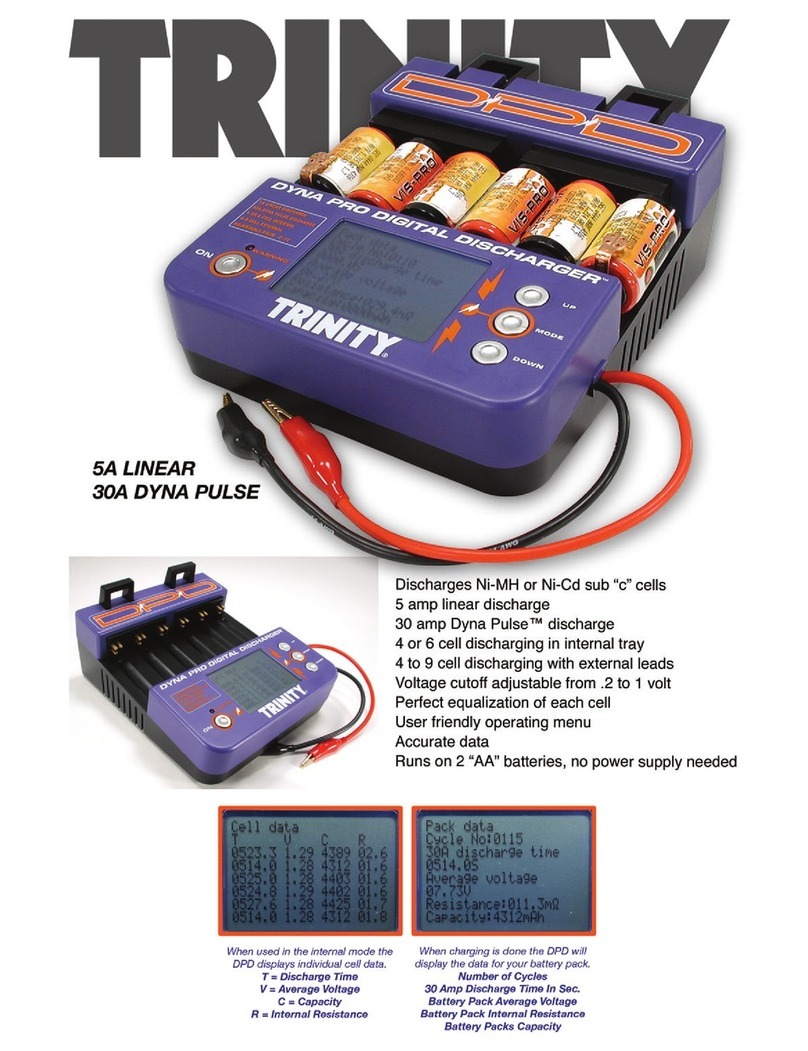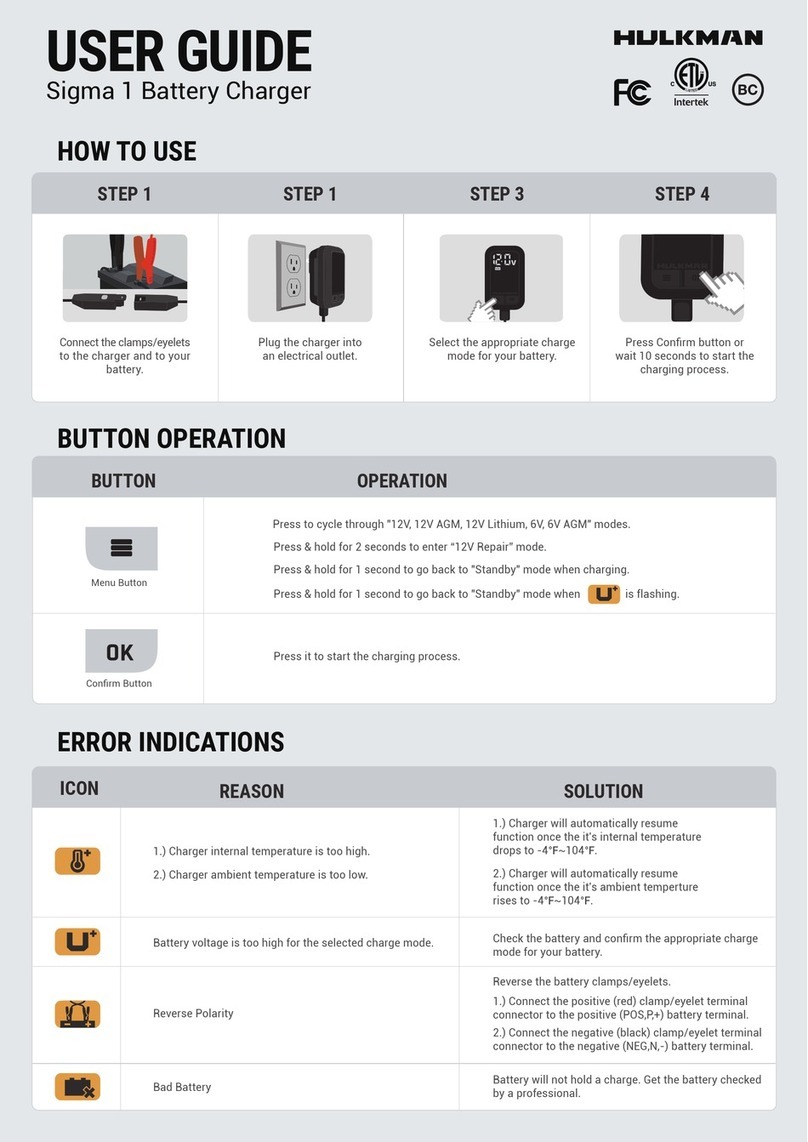CONTENTS
TABLE DES MATIERES
ÍNDICE
English
Page
IMPORTANT SAFETY INFORMATION ............. 3
MEANINGS OF SIGNAL WORDS ..................... 3
SAFETY
IMPORTANT SAFETY INSTRUCTIONS
FOR BATTERY CHARGER .......................... 4
IMPORTANT SAFETY INSTRUCTIONS
FOR USE OF THE BATTERY AND
BATTERY CHARGER ................................... 5
DISPOSAL OF THE EXHAUSTED
BATTERY ..................................................... 6
Page
OPERATION AND MAINTENANCE
MODEL ................................................................ 7
NAME OF PARTS ............................................... 7
SPECIFICATIONS .................................................... 8
APPLICATIONS ....................................................... 8
CHARGING METHOD ............................................. 8
BEFORE USE ......................................................... 11
MAINTENANCE AND INSPECTION .................... 11
STORAGE .............................................................. 12
SERVICE AND REPAIRS ....................................... 12
PARTS LIST ........................................................... 33
Español
Página
INFORMACIÓN IMPORTANTE SOBRE
SEGURIDAD .............................................. 23
SIGNIFICADO DE LAS PALABRAS
DE SEÑALIZACIÓN .................................. 23
SEGURIDAD
INSTRUCCIONES IMPORTANTES
DE SEGURIDAD PARA EL CARGADOR
DE BATERÍAS ............................................ 24
INSTRUCCIONES IMPORTANTES
DE SEGURIDAD PARA LA BATERÍA
Y EL CARGADOR DE BATERÍAS .............. 25
ELIMINACIÓN LAS BATERÍAS AGOTADAS .. 26
Página
OPERACIÓN Y MANTENIMIENTO
MODELO ........................................................... 27
NOMENCLATURA ............................................ 27
ESPECIFICACIONES ......................................... 28
APLICACIONES ................................................ 28
MÉTODO DE CARGA ....................................... 28
ANTES DE LA UTILIZACIÓN ........................... 31
MANTENIMIENTO E INSPECCIÓN ................. 31
ALMACENAMIENTO ........................................ 32
SERVICIO Y REPARACIONES .......................... 32
LISTA DE PIEZAS ............................................. 33
Français
Page
INFORMATIONS IMPORTANTES
DE SÉCURITÉ................................................... 13
SIGNIFICATION DES MOTS
D’AVERTISSEMENT ......................................... 13
SECURITE
CONSIGNES DE SÉCURITÉIMPORTANTES
POUR LE CHARGEUR DE BATTERIE ....... 14
CONSIGNES DE SÉCURITÉIMPORTANTES
POUR L’UTILISATION DE LA BATTERIE
ET DU CHARGEUR DE BATTERIE ........... 15
MISE AU REBUT D’UNE BATTERIE USÉE ..... 16
Page
UTILISATION ET ENTRETIEN
MODÈLE ........................................................... 17
NOM DES PARTIES ......................................... 17
SPECIFICATIONS ............................................. 18
UTILISATIONS ................................................. 18
MÉTHODE DE RECHARGE .............................. 18
AVANT L’UTILISATION ................................... 21
ENTRETIEN ET INSPECTION........................... 21
RANGEMENT ................................................... 22
SERVICE APRES-VENTE ET RÉPARATIONS ... 22
LISTE DES PIÈCES ........................................... 33
